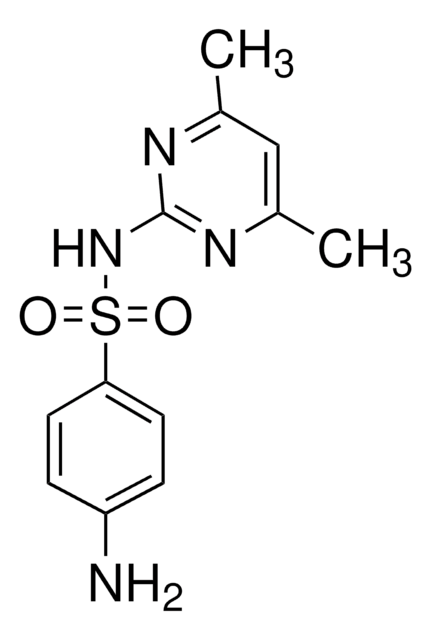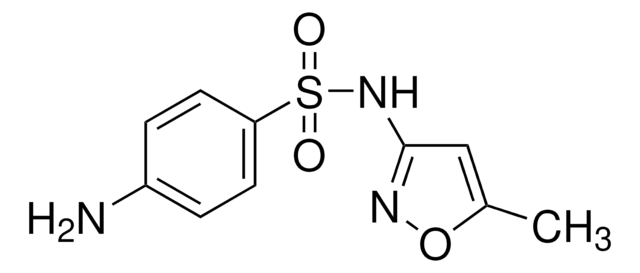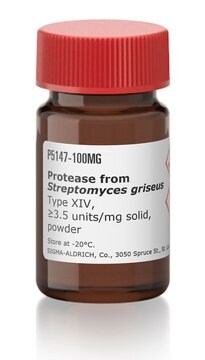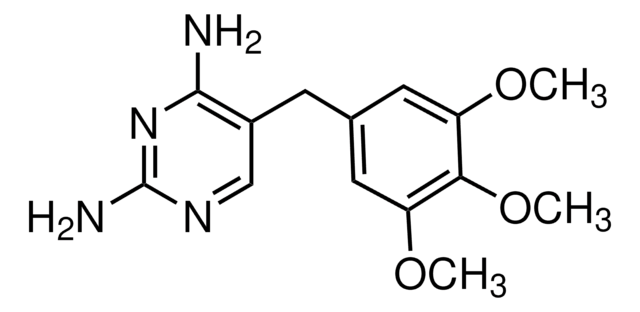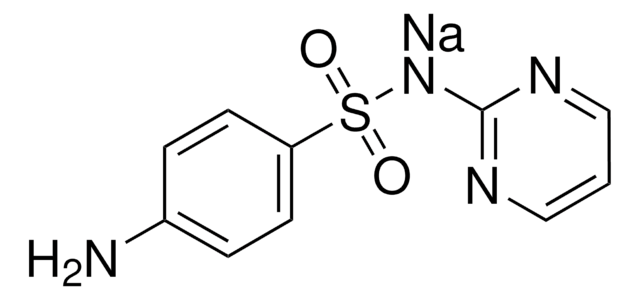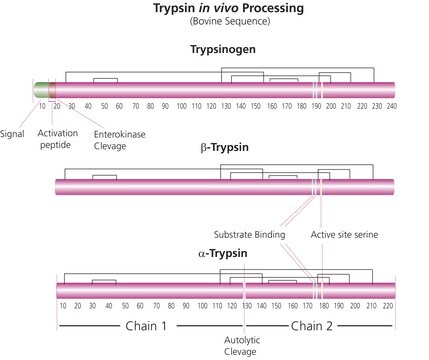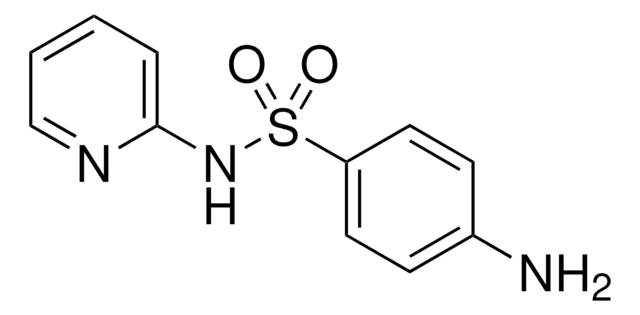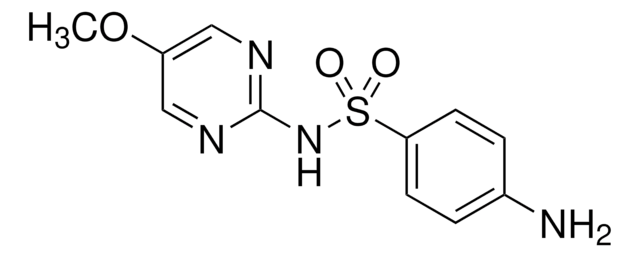Kluczowe dokumenty
S8626
Sulfadiazine
99.0-101.0%
Synonim(y):
4-Amino-N-(2-pyrimidinyl)benzenesulfonamide, N1-(Pyrimidin-2-yl)sulfanilamide
About This Item
Polecane produkty
opis
Solubility - Practically insoluble in water, slightly soluble in acetone, very slightly soluble in ethanol (96 per cent). It dissolves in solutions of alkali hydroxides and in dilute mineral acids.
Poziom jakości
Próba
99.0-101.0%
Formularz
powder or crystals
kolor
white to faint yellow, faint pink
mp
253 °C (dec.) (lit.)
rozpuszczalność
96% ethanol: very slightly soluble
acetone: slightly soluble
water: practically insoluble
spektrum działania antybiotyku
Gram-negative bacteria
Gram-positive bacteria
mycoplasma
Tryb działania
DNA synthesis | interferes
enzyme | inhibits
ciąg SMILES
Nc1ccc(cc1)S(=O)(=O)Nc2ncccn2
InChI
1S/C10H10N4O2S/c11-8-2-4-9(5-3-8)17(15,16)14-10-12-6-1-7-13-10/h1-7H,11H2,(H,12,13,14)
Klucz InChI
SEEPANYCNGTZFQ-UHFFFAOYSA-N
Szukasz podobnych produktów? Odwiedź Przewodnik dotyczący porównywania produktów
Powiązane kategorie
Opis ogólny
Zastosowanie
Działania biochem./fizjol.
Inne uwagi
Hasło ostrzegawcze
Warning
Zwroty wskazujące rodzaj zagrożenia
Zwroty wskazujące środki ostrożności
Klasyfikacja zagrożeń
Acute Tox. 4 Oral - Aquatic Chronic 2 - Repr. 2
Kod klasy składowania
11 - Combustible Solids
Klasa zagrożenia wodnego (WGK)
WGK 2
Środki ochrony indywidualnej
dust mask type N95 (US), Eyeshields, Faceshields, Gloves
Wybierz jedną z najnowszych wersji:
Masz już ten produkt?
Dokumenty związane z niedawno zakupionymi produktami zostały zamieszczone w Bibliotece dokumentów.
Klienci oglądali również te produkty
Nasz zespół naukowców ma doświadczenie we wszystkich obszarach badań, w tym w naukach przyrodniczych, materiałoznawstwie, syntezie chemicznej, chromatografii, analityce i wielu innych dziedzinach.
Skontaktuj się z zespołem ds. pomocy technicznej